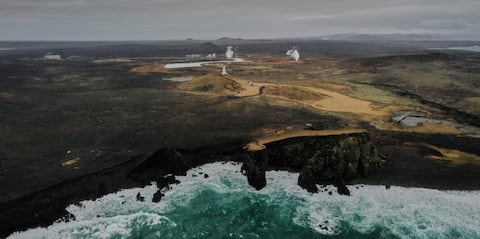A small lava eruption appears to be in the works in southwest Iceland, about thirty kilometers from Reykjavik, Icelandic authorities announced on Wednesday, but they do not expect major consequences for residents and traffic. air.
Shakes typical of a lava surge occurred Wednesday afternoon in the area of Mount Keilir, in the small peninsula of Reykjanes, already affected by a major earthquake of magnitude 5.7 last week, announced the Institute. Icelandic weather report in a press release.
“The possibility of an eruption is real, but you have to see how the activity evolves,” Freysteinn Sigmundsson, a geophysical researcher at the University of Iceland, told AFP at a press conference.
“It is not certain, the situation can last for hours or even more, with very many small earthquakes,” he explained.
No eruption has occurred on the peninsula for eight centuries, according to vulcanologists.
Police cut roads around the mountain, according to an AFP photographer there.
While Keflavik International Airport and the small fishing port of Grindavik are only a few kilometers away, the area in the immediate vicinity of the possible eruption is uninhabited and no evacuation was announced on Wednesday.
“In the event of an eruption, we expect a gush, where lava flows. We do not expect a large explosive eruption, with minimal impact on the atmosphere, air traffic and the living conditions of people, ”said Sigmundsson.
The area has been under surveillance in recent days due to a very unusual number of mini-tremors after the massive February 24 earthquake, which was felt as far away as Reykjavik and much of western Iceland.
More than 16,000 tremors of varying magnitude have shaken the seismographs over the past eight days, compared to usually a thousand in a year.
Iceland is the largest and most active volcanic region in Europe, with an eruption on average every five years.
The last eruption dates back to 2014-2015 in Holuhraun, a fissure belonging to the Bárdarbunga volcanic system in an uninhabited area in the south-east of the country.
But the most famous of the modern era is that of Eyjafjallajökull, in the south of the country, in 2010. Its huge plume of smoke had caused the greatest air disruption in peacetime, paralyzing the European skies for nearly a month.

